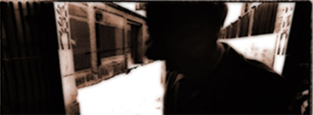Simplicity full of nuances
Simplicity full of nuances
The art takes on organic and geometric shapes in the recently opened exhibition at the Vigeland Museum in Oslo through intentional disintegration, change of perspectives and a baroque masque.
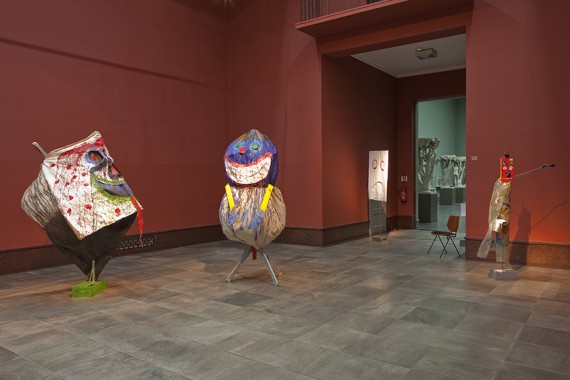
In three separate rooms of the Vigeland Museum, right next to the impressive sculptures by Vigeland himself; expressing the shifting phases of life, is the winter exhibition represented by three artists who are unwilling to be restricted by the medium they are working with. It is about art seeking its relationship to the tradition, created by artists who question themselves through their individual attempts to shed a light on different materials and their externally hidden potential. All three are simultaneously sculpting the rooms through their works, in respectively different procedures. And this is one of the reasons why this exhibition stands out – the rooms come into motion due to the self reflective state of the works, dealing with specific materials with its patterns and colours which then is put in relation to the beautifully variegated interior of the museum.
I am introduced to three Norwegian artists of the younger generation, whose artistic fundament mainly is about not accepting the so-called truths, but instead critically reflect on and simultaneously decode and dissolve the general accepted ideas into microscopic components and thus be able to see and reveal hidden qualities. It is primarily about the qualities of the material and the following transformation – a skewing of the definition of what is and what is not an aesthetic material. And this skewing simultaneously questions and expresses an inner resistance towards the tradition in which they work. Something positive – a so-called truth – is questioned, denied and hereby put into motion. The negative is not about rejecting the tradition but to create or see negativity instead of positivity, i.e. to reflect on the conventional ideas, the unconsidered – what do we really see?
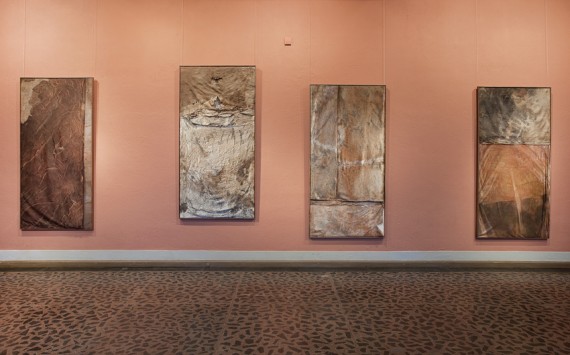
A beautiful decay
As in the first room where four frames with painted textiles by Ane Graff (b. 1974) cover one long side in an otherwise naked room, and where I immediately think about what I am really looking at. As an observer of her series You Are My MarbleI realise that I am a part of the artist’s own observation, of her view; in this piece the actual observer is the artist herself, her own life’s primary observer. Life and art are the result of her observations since she creates simultaneously as she looks upon the process from a distance, and this direct experience creates a notion of being a not altogether immaterial part of her work.
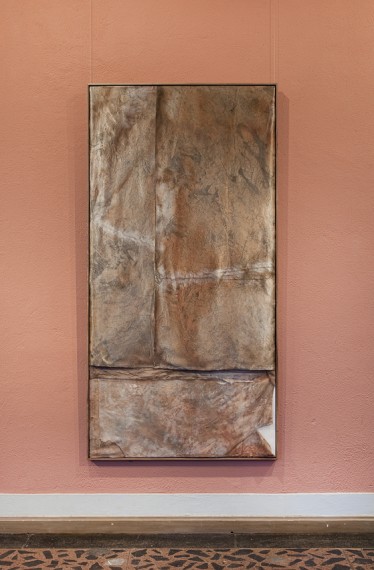
The textiles are delightful in all their fragility and darkness. Maybe in opposite to her intentions since the frames with torn and derelict pieces of cloth could indicate a subversive process in a dystopian vision of the future where entropy inevitably rules. Through the line of thought of change, degeneration and decay, one could maybe state that Graff’s works is the most philosophical at this exhibition, despite or even maybe due to her clear wishes for a detailed and scientifically rational examination of the material. There seems to be an obvious interest in making the concealed comprehensible and spiritual through displaying organic patterns on crusty surfaces, consequently revealing the universal connections we all are a part of.
She examines different ways to put a light on, and simultaneously camouflaging, the transformative possibilities of the material, and this out of the idea about decay – objects in our surrounding gradually collapse according to the principle of entropy. Through her attempts to invent the material again and again, I get an additional feeling of her profound interest in what the specific material mean to her, and to us, which traditional role it has and which conventional ideas it deals with, and ultimately how she can transform it by skewing the definition.
A numb movement
In conformity with Graff, Camilla Løw (b. 1976) is also conscious about her observers, all though not in a metaphysical transferred sense, but from the perspective of space and movement. I could simply present, and at the same time dismiss, her work by describing it as a number of square concrete plates with painted surfaces placed on the floor. But I could also suggest a poetic dimension, partly due to the title Scattered light and partly because of an edification of industrial layers in clear crystallized patterns – categorical in its mute simplicity but simultaneously enigmatic in how they occupy the room.
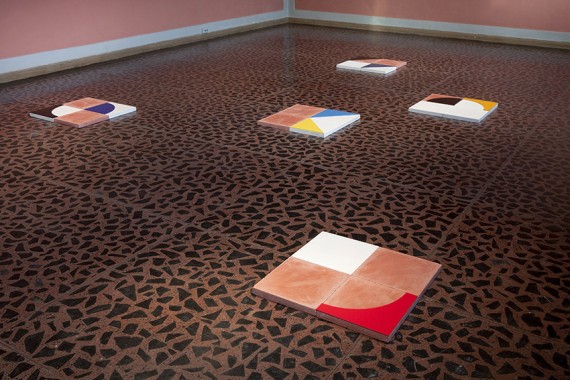
And even if I am not aesthetically attracted to her choice of material, form, size and colour, and don’t receive the same philosophically structured experience as in the case of Graff, this is yet a well put example of a contemporary displacement of perspectives that make demands on the observers. Her choice of material is regarded as foreign elements in the context and must therefore be put in relation to its immediate surroundings. It is consequently a question of how these objects should be presented since they already represents something else outside the room. Also, this representation needs to be taken care of to eliminate eventual risks of regarding the work as numb and square.
It is this relationship between the strained minimalistic expression and the actual showroom that I carry with me. The work does not progress or unfold, the material is numb and unattractive in comparison to the abundance of the museum interiors, and any richness in variations is absent. But it is exactly this negation that takes the work further – it has the ability to open up the perspective towards a new dimension where the room becomes present.
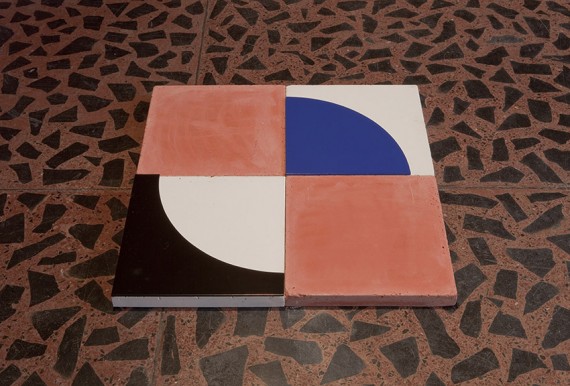
An over explicit play
The relation to the room is probably not equally important for Sten Are Sandbeck (b. 1969) and therefore not as present as in the two other works, at least not in this exhibition. Naturally though, he is aware of the space as he places his ensemble of figures which, according to a separate information sheet, performs a sculptural role-play where all figures has been given a specific trait in a mute satirical performance: sublimation – the artist; rationalisation – the guard: repression – the director, etc.
The room develops into a strange static masque as we, the visitors, are moving around these, in many regards, powerful and expressively shaped sculptures. The short manuscript that is attached to this work loses a great deal of its initial idea; I assume that the text mainly was thought as a staged foolery, which sarcastically questions the predictability of a gallery opening with its specific roles and manners, but this intention is completely lost during my lonely walk in this room.
This work is primarily about culture and history. The obvious simplicity, close to childishness, in these sculptures, represents in a friendly state of mind a kind of unafraid attitude towards a widely spread conventional restriction against using unsuitable (simple, cheap, banal, childish, ugly, etc) material in the so-called serious art. In that sense this work opens up and broadens your perspective by breaking the barriers between art as a cultural product and art as a naturally integrated part of the ongoing life. Walking around these sculptures you get a notion that Sandbeck is not creating them in a detailed or meticulous manner out of a specific material or artistic parameter, he probably just picks up materials, objects and tools which happen to be within a close distance at the very moment.
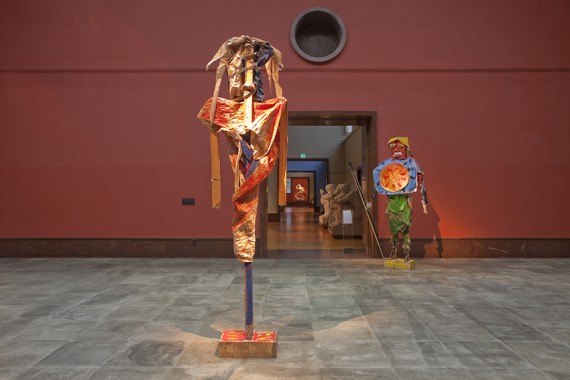
Moving around the room, this over-explicit resistance towards the tradition and the medium soon becomes tiresome and hollow – generally speaking – but all the more so after reading this comment in an attached folder: “Sten Are Sandbeck is a unique talent on the Norwegian art scene, through his uncompromising persistence and continuous disbelief in the medium he is working with.” Which artist of today, independent of genre or style, does not question their tradition and the medium they are working with? It’s not a very unique or innovative idea Sandbeck is dealing with when he claims to combine painting with sculptures by creating picturesque sculptures from randomly collected materials and objects.
On my way out in the solid November darkness I hesitate once more in front of the decaying processes of Ane Graff, and wonder if it is the slowly disintegrating processes of reality that eventually could have the ability to be transformed into slowly healing processes in art? Is it of importance that you never should be able to reach anything clearly defined? The conclusion for now is that there should always be a movement between the object, the notion and the observer – the movement becomes the content and nothing is defined – what do we really know?
ANE GRAFF/CAMILLA LØW/STEN ARE SANDBECK
23rd November 2012 – 10th February 2013
The Vigeland Museum, Oslo
KunstFORUM 07.12.2012

